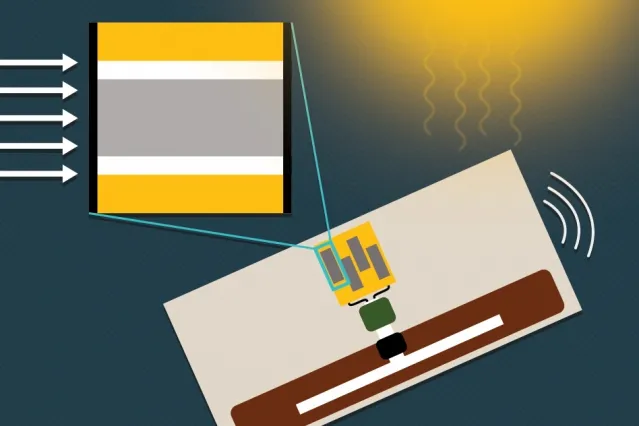Solar-powered sensors show IoT potential
Sep 30, 2019 06:08 PM ET
- MIT engineers have combined RFID (radio-frequency identification) tags with thin-film perovskite solar cells to create energy-harvesting IoT sensors.

According to the researchers, as many as 75 billion connected devices could make up the internet of things by 2025. While vehicles, TVs and phones have their own power sources, devices further down the food chain like simple sensors will need to be able to harvest power, as regularly swapping out batteries for billions of devices will be impossible.
“In the future, there could be billions of sensors all around us. With that scale, you’ll need a lot of batteries that you’ll have to recharge constantly,” said Sai Nithin Kantareddy, a PhD student in the MIT Auto-ID Laboratory.
“But what if you could self-power them using the ambient light? You could deploy them and forget them for months or years at a time. This work is basically building enhanced RFID tags using energy harvesters for a range of applications.”
The sensor consists of an RFID tag built on a plastic substrate. A thin an array of perovskite solar cells is directly connected to an integrated circuit on the tag. As with traditional RFID systems, a reader sweeps the room and each tag responds. But instead of using energy from the reader, it draws harvested energy from the perovskite cell to power up its circuit and send data by backscattering RF signals.
The solar sensors work best in direct sunlight but can also function in dim indoor light and can transmit data continuously at distances five times greater than traditional RFID tags. In a pair of papers published in the journals Advanced Functional Materials and IEEE Sensors, MIT Auto-ID Laboratory and MIT Photovoltaics Research Laboratory researchers describe using the sensors to continuously monitor indoor and outdoor temperatures over several days. Depending on environmental factors such as moisture and heat, it’s claimed the sensors could operate for months or potentially even years at a time.
“The perovskite materials we use have incredible potential as effective indoor-light harvesters,” said postdoc researcher Ian Mathews, from MIT’s Department of Mechanical Engineering.
“Our next step is to integrate these same technologies using printed electronics methods, potentially enabling extremely low-cost manufacturing of wireless sensors.”
Also read

